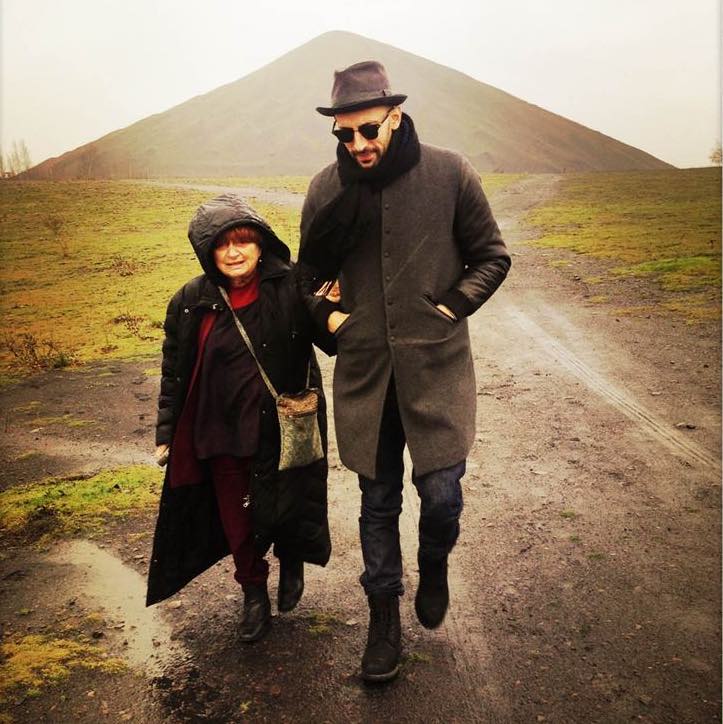 What a surprising pleasure to see the new documentary Visages, Villages, by 89-year-old Agnès Varda, made with 34-year-old artist JR and first shown out of competition at this year’s Cannes Film festival.
What a surprising pleasure to see the new documentary Visages, Villages, by 89-year-old Agnès Varda, made with 34-year-old artist JR and first shown out of competition at this year’s Cannes Film festival.
Throughout the course of the film, both Varda and JR do the things for which they are already known. While Varda explores her past through places, people and memories, along the lines of her wonderful 2008 documentary, The Beaches of Agnès, JR (who always wears a hat and dark glasses and has never revealed his true identity) mounts large photographic images on the sides of buildings or in public locations. Working together on the same film, however, the duo creates a very different work of art that is variously frivolous, whimsical and profound.
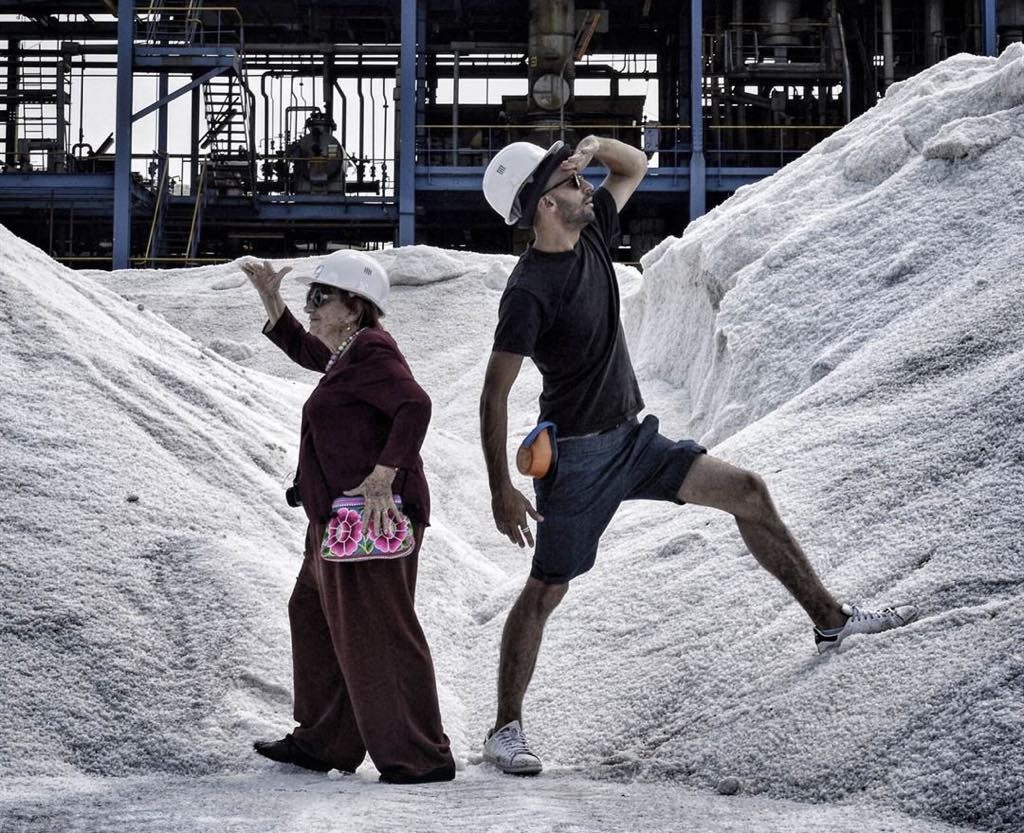 In a delightful opening sequence, the two unlikely companions stage fictional scenarios of places where they did not first meet – at a bus stop, in a bakery, hitchhiking, in a nightclub – with the two always just missing each other.
In a delightful opening sequence, the two unlikely companions stage fictional scenarios of places where they did not first meet – at a bus stop, in a bakery, hitchhiking, in a nightclub – with the two always just missing each other.
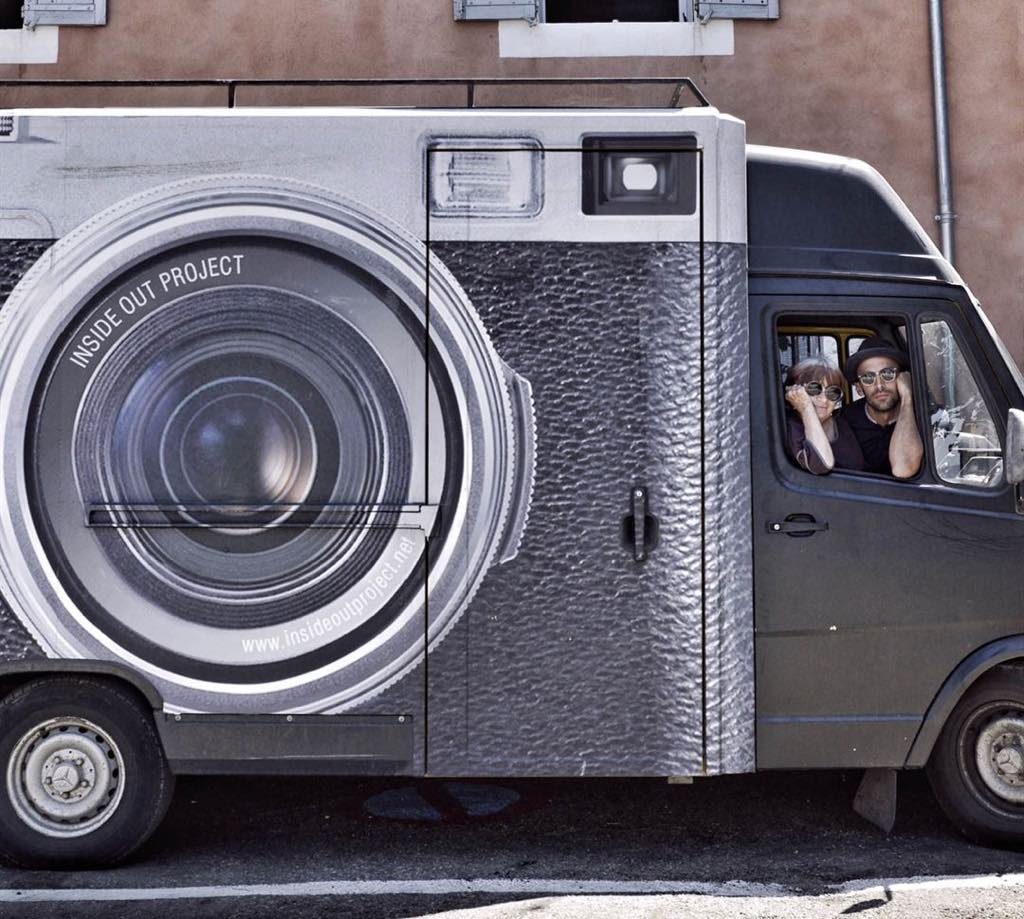 The core of the film follows them as they travel in JR’s van (decorated like a camera, with a photo booth inside) through various small towns and villages, meeting and photographing people who are seldom noticed by anyone, let alone included in gigantic art installations on the walls of buildings.
The core of the film follows them as they travel in JR’s van (decorated like a camera, with a photo booth inside) through various small towns and villages, meeting and photographing people who are seldom noticed by anyone, let alone included in gigantic art installations on the walls of buildings.
 Among the many memorable characters they talk to is an old woman, a miner’s daughter from the north of France, who is the last person still choosing to live in a long line of derelict miners’ houses. Then there are a shy waitress, who is overwhelmed to see a gigantic image of herself holding an umbrella above her head, and a farmer whose mastery of modern technology means that he is able to work huge areas of land entirely by himself, never seeing anyone during his working day, and who is delighted to find himself plastered across the exterior of his barn.
Among the many memorable characters they talk to is an old woman, a miner’s daughter from the north of France, who is the last person still choosing to live in a long line of derelict miners’ houses. Then there are a shy waitress, who is overwhelmed to see a gigantic image of herself holding an umbrella above her head, and a farmer whose mastery of modern technology means that he is able to work huge areas of land entirely by himself, never seeing anyone during his working day, and who is delighted to find himself plastered across the exterior of his barn.
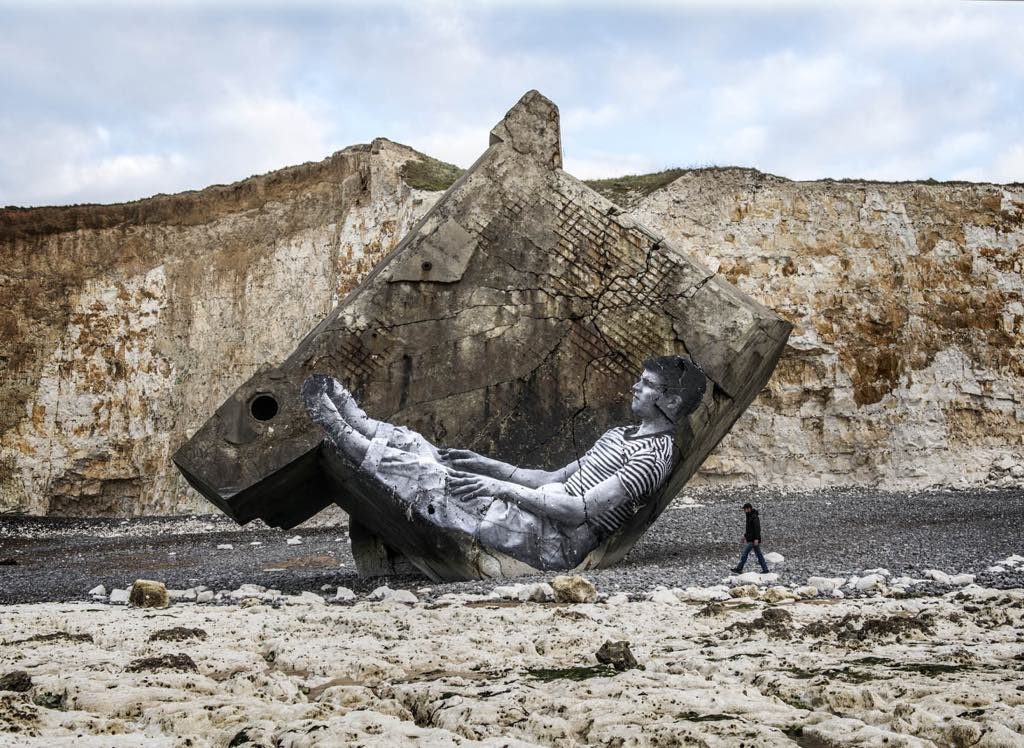 On one occasion, JR meets with dockworkers he has already photographed, and Varda insists on their wives being represented instead. Perhaps most memorably, JR mounts a beautiful photograph that Varda took in 1954 of her friend, the photographer Guy Bourdin, on the side of a huge German bunker that had fallen from a cliff onto a beach. When JR and Varda go to see the portrait the next morning, the tide has effaced the image entirely from the side of the bunker.
On one occasion, JR meets with dockworkers he has already photographed, and Varda insists on their wives being represented instead. Perhaps most memorably, JR mounts a beautiful photograph that Varda took in 1954 of her friend, the photographer Guy Bourdin, on the side of a huge German bunker that had fallen from a cliff onto a beach. When JR and Varda go to see the portrait the next morning, the tide has effaced the image entirely from the side of the bunker.
The precariousness of life is a theme that dominates Visages, Villages, not only in the evocation of friends like Bourdin or the photographers Henri and Martine Cartier-Bresson (whose graves they visit) or Varda’s husband Jacques Demy (whose loss Varda continues to mourn in so many of her films) but also in Varda’s meditation on old age and death (which she admits to thinking about often) or the visit they make to JR’s 100-year-old grandmother.
In a documentary that is so concerned with viewing others and oneself, it is not surprising that another prevailing theme is that of sight. The way Varda and JR deal with it is what makes their work so original.
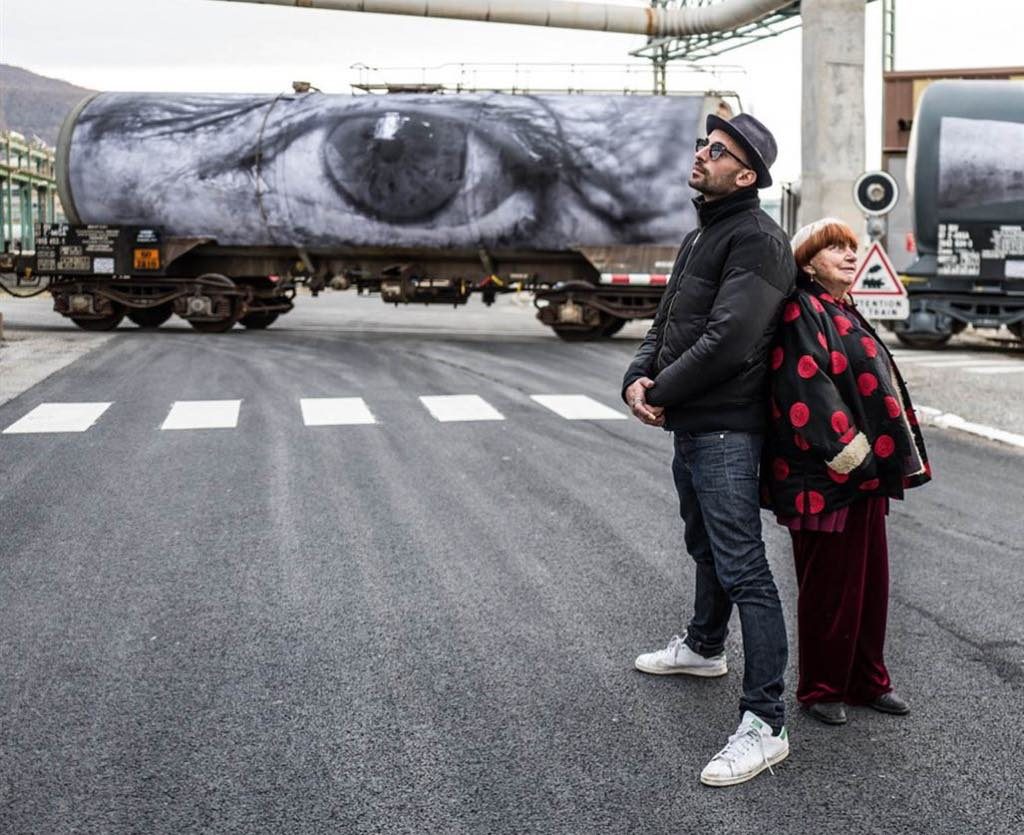 What happens when the all-seeing eye of the filmmaker begins to fail? We watch as Varda undergoes one of her regular eye injections for her sight problems. Ever alert to intertextual references, she likens it to the horrifying image of a knife blade cutting through a human eyeball in Luis Buñuel’s Un Chien Andalou.
What happens when the all-seeing eye of the filmmaker begins to fail? We watch as Varda undergoes one of her regular eye injections for her sight problems. Ever alert to intertextual references, she likens it to the horrifying image of a knife blade cutting through a human eyeball in Luis Buñuel’s Un Chien Andalou.
The two filmmakers represent Varda’s sight difficulties by creating a huge eye chart with human figures holding up giant letters. But Varda’s eyes are not the only focus: throughout the film, she asks JR to remove his sunglasses so that she can see his eyes, a request he consistently refuses. I will not reveal whether or not he eventually takes them off.
Varda also replays a parodic sketch that she filmed of her early movie Cléo from 5 to 7 in which the perpetual-sunglass-wearing director Jean-Luc Godard removes his shades for the camera. Poignantly, when Varda and JR go to Godard’s home in Switzerland for a pre-arranged visit, he stands them up. Varda leaves some pastries and a handwritten note on the window of his locked front door.
At one moment in the film, a perplexed person asks what the point is of putting up portraits of ordinary people, animals and things (everything from fish and goats to toes). Varda’s reply is simple and eloquent: “Le but, c’est le pouvoir de l’imagination” (“The point is the power of the imagination”).
It is a joy and a privilege to be able to witness the power – and charm – of the imagination of Varda and JR in this engaging documentary.
Favorite
Delightful, insightful. Not to be missed.
In a world with so much despair and cynicism, NOTHING could be more life-affirming and inspiring than this beautiful film!